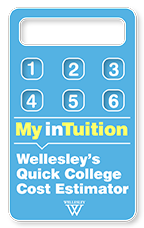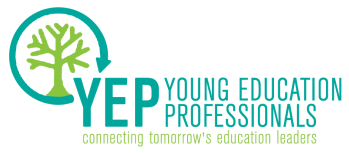 Credit: Wellesley College
Credit: Wellesley College A recent report from the Brookings Institution highlighted the My inTuition tool, after it recounted the lackluster efforts of the federal government and higher education institutions to clarify and simplify college costs. In particular, the My inTuition tool is lauded for three characteristics that the Brookings team identified as key to a successful transparency tool:
- Simple. Six questions is all it takes for the My inTuition tool to calculate the estimated cost for a student. From the pages and hours required to fill out a Free Application for Federal Student Aid (and even the numerous questions required for estimates from the FAFSA4Caster), the My inTuition tool has cornered the market on simple tools with its questions on citizenship, home environment, family income, home ownership, savings, and number of children in college.
- Accurate. In an effort to make college costs clearer for prospective students and their families, the 2008 Higher Education Opportunity Act mandates that colleges and universities receiving federal financial aid report their average net price by income level. However, as the author of the Brookings report points out, this isn’t always helpful. Examples from Dartmouth and Columbia show students from families with very low incomes pay more than students from families with slightly higher incomes and about the same as students from families with moderate income. This happens because of different formulas used by the federal government and institutions and other complications that can arise. The My inTuition tool is more accurate because it provides cost estimates that are unique to each student. And how does it do that?
- Individualized. The My inTuition tool goes beyond the federally-mandated average net price by income level and uses the information provided to make more accurate cost estimates based on individual circumstances. The six questions in the tool allow for a personal cost estimate that assists families in choosing a college that fits within their financial means.
As the Brookings report notes, this is not the first attempt to clarify costs and support realistic cost estimates for students. Harvard announced the Financial Aid Initiative in 2004 that set income ceilings and established estimated family contribution expectations based on those levels. Based on this initiative, a family with an annual income of less than $65,000 per year would not be expected to pay anything for a student to attend Harvard. In addition to better cost information, other efforts have focused on assistance completing the FAFSA and application fee waivers. And in the 114th Congress’ first week in session, Sens. Lamar Alexander, R–Tenn., and Michael Bennet, D–Colo., introduced legislation to boil the FAFSA application down to two questions.
While the My inTuition tool is a valuable innovation, there are numerous paths for schools, and the federal government, to pursue that have the potential to improve enrollment figures for low-income students. Whatever the path, let’s hope that more trend in favor of simple, accurate, and individualized solutions.
Bill Winfrey is an associate with a public policy and advocacy firm in D.C. Reach him via email or Twitter.

 RSS Feed
RSS Feed